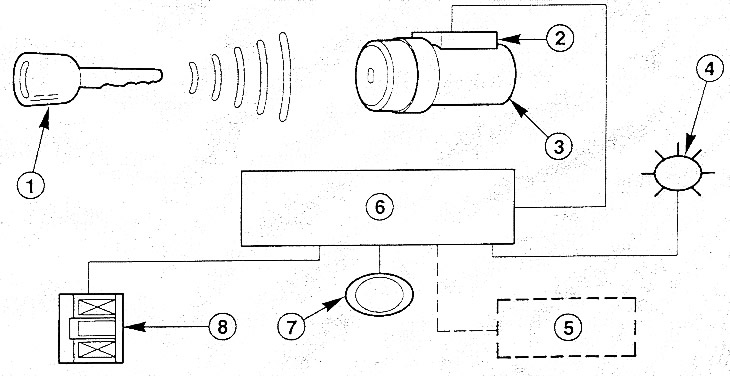The system consists of the following parts:
- immobilizer control unit;
- immobilizer indicator lamp in hours (there is the same anti-theft system warning lamp);
- engine control unit (gasoline engines);
- solenoid valve for shutting off the engine in the injection pump (diesels);
- coils in the ignition key;
- castle (switch) ignition with built-in converter.
The converter is a battery-free receiving and transmitting device, which has its own separate code for each ignition key.
The immobilizer is activated when the ignition key is removed.
When the ignition is switched on, electrical energy is transferred inductively through the coil to the converter in the key. The key code is read and transmitted to the immobilizer control unit. It compares the key code with the code stored in memory. After that, the code of the engine control unit is checked.
If the engine cranks but does not start, check the red control LED first. If the LED flashes for about 1 minute at a fast pace, this means that the system has been activated and the receiver in the ignition switch has not recognized the key code.
The reasons for this may be as follows:
- another key from the keychain interferes with the reading process;
- wrong key code.
An electronic check of the immobilizer is carried out using a diagnostic tool by interrogating the diagnostic unit.

1. Ignition key with electronic code; 2. Receiving and transmitting device; 3. Ignition lock; 4. Pilot lamp (Light-emitting diode); 5. PAST module (diesel engine only); 6. EEC-V module; 7. Starter; 8. Fuel cut-off valve.
